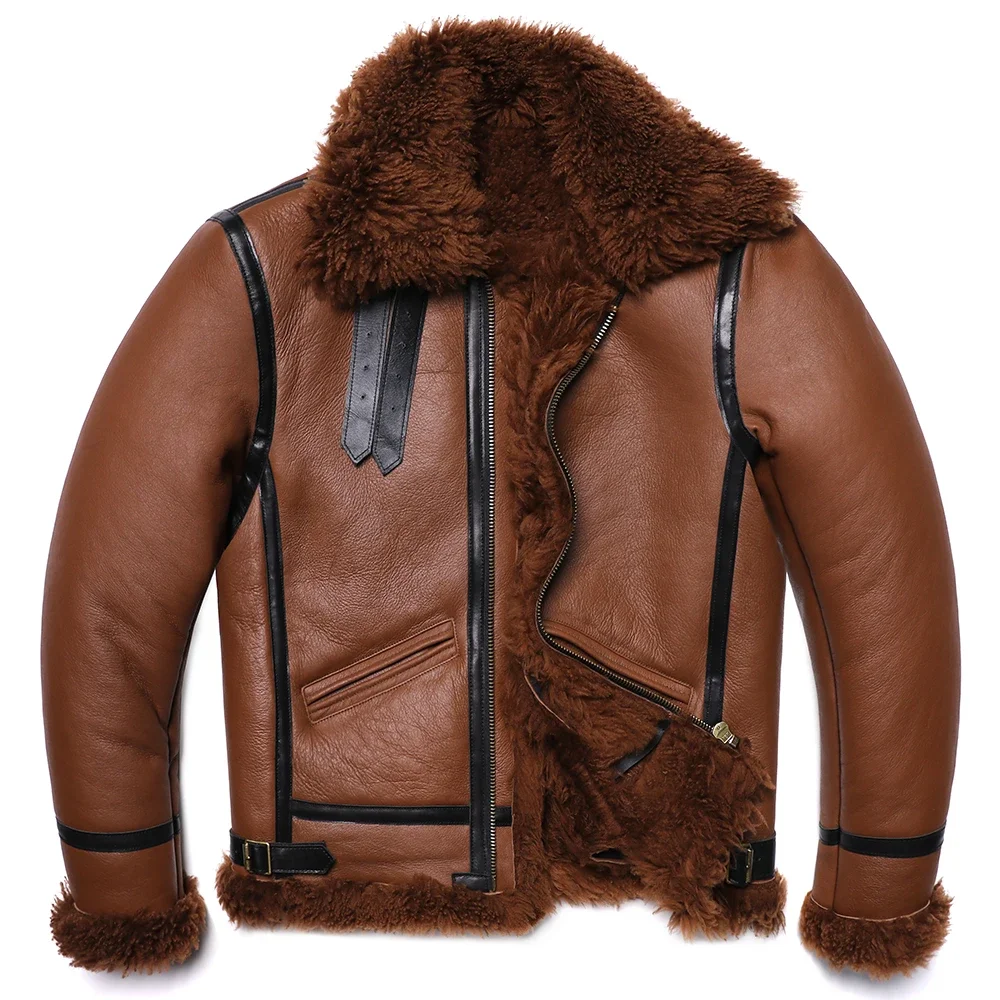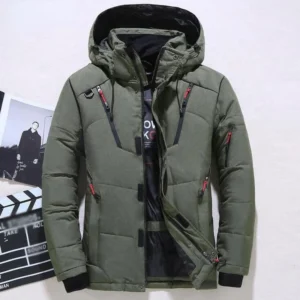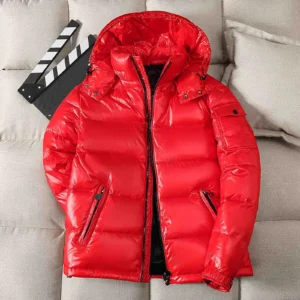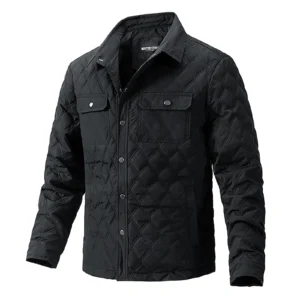When winter winds howl and temperatures plummet, your choice of outerwear material makes all the difference between shivering discomfort and cozy warmth. Many shoppers find themselves confused between shearling and sheepskin options, often using the terms interchangeably without understanding the crucial differences. What many don’t realize is that shearling is actually a specific type of sheepskin with distinct properties that set it apart.
Choosing between these premium materials isn’t just about style—it impacts your comfort, the durability of your investment, and most importantly, how warm you’ll stay during the coldest months. The differences between these materials can significantly affect their performance in varying winter conditions, sometimes making a 10-15 degree difference in how warm you feel.
This comprehensive guide will clarify the distinctions between shearling and sheepskin, examine their unique properties, and help you determine which material best suits your specific winter needs. We’ll explore everything from warmth capabilities and durability to maintenance requirements and cost considerations.
At Metro Cloak, our expertise in premium outerwear materials selection has taught us that the right winter material choice depends on individual needs, regional climate conditions, and personal preferences. By the end of this guide, you’ll have the knowledge to make an informed decision that will serve you through many winters to come.
For a deeper understanding of both materials, our comprehensive guide on shearling versus sheepskin provides additional foundation knowledge beyond what we’ll cover here.
What Is Shearling? The Complete Definition
Shearling is a premium material made specifically from lambskin (young sheep) that has been processed with the wool still attached to the hide. This creates its distinctive dual-sided nature—suede leather on one side and plush wool on the other. What makes shearling special is that the wool remains connected to the skin throughout the tanning process, creating a seamless, durable material.
The tanning process for shearling is particularly specialized, requiring careful preservation of both the leather and wool components. The end result is a material that combines the suppleness of fine leather with the insulating properties of natural wool.
Key characteristics of quality shearling include:
- Plush, dense wool with uniform length
- Supple, pliable leather that moves naturally
- Natural cream to tan coloration (unless dyed)
- Substantial weight with excellent drape
- Exceptional softness on both sides
Genuine shearling differs dramatically from synthetic alternatives. Authentic shearling has a distinctive weight and hand-feel—the wool fibers are anchored securely to the hide rather than glued or sewn on. When examining quality shearling, you’ll notice the wool moves naturally with the leather base, creating an integrated, harmonious material.
Understanding the key differences between shearling and sheepskin helps clarify why these materials perform differently in winter conditions.
What Is Sheepskin? Understanding the Broader Category
Sheepskin is the broader category that encompasses the hide of a sheep, which can be processed in various ways depending on the desired end product. This versatile material can include both varieties where the wool remains intact (including shearling) and those where the wool has been removed, resulting in just the leather component.
The processing methods for sheepskin vary widely, resulting in different textures, weights, and performance characteristics. Some sheepskin is processed with the wool sheared to specific lengths, while other varieties maintain the natural wool length. The tanning methods also vary, affecting the pliability, water resistance, and durability of the final material.
The quality of sheepskin varies significantly based on:
- The breed of sheep (Merino, Suffolk, etc.)
- The age of the animal (lamb vs. mature sheep)
- Geographic origin (affecting wool density and fiber quality)
- Processing techniques and tanning methods
- Wool length and density
It’s important to understand that while all shearling is sheepskin, not all sheepskin is shearling. Shearling specifically refers to lambskin with the wool attached, whereas sheepskin can refer to hides from sheep of any age, processed in various ways.
Many consumers wonder if sheepskin and shearling are the same, and the answer lies in these specific distinctions that affect performance and feel.
Material Comparison: Shearling vs. Sheepskin Features
To make an informed decision, understanding the specific differences between these materials is crucial. The following comparison highlights key distinguishing features:
| Feature | Shearling | Sheepskin |
|---|---|---|
| Origin | Young lamb | Any age sheep |
| Wool Length | Usually uniform, denser | Can vary widely |
| Weight | Typically lighter | Often heavier |
| Texture | Very soft, plush | Varies from coarse to soft |
| Leather Quality | Finer, more supple | Can be thicker, more rugged |
| Typical Thickness | Thinner, more pliable | Can be substantially thicker |
| Natural Color | Cream to light tan | Cream to dark brown |
| Common Uses | Luxury coats, collars, linings | Varied outerwear, rugs, footwear |
Shearling’s wool typically has a more consistent, plush texture because it comes from younger animals. The wool fibers tend to be finer and softer against the skin. The leather portion is often more supple and lightweight due to the animal’s youth, resulting in a material that drapes beautifully on the body.
Sheepskin from mature sheep generally produces a thicker, sometimes more durable hide with wool that may vary more in texture. This variation can make certain sheepskin products better suited for rugged applications where durability is the primary concern.
When examining these materials, note the density and uniformity of the wool fibers. Quality shearling has an even wool distribution with consistent length, while some sheepskin varieties might show more variation. The leather side of shearling typically has a smoother, more refined finish compared to some thicker sheepskin varieties.
For a more detailed comparison focused specifically on winter performance, our guide on shearling versus sheepskin for winter wear provides additional insights.
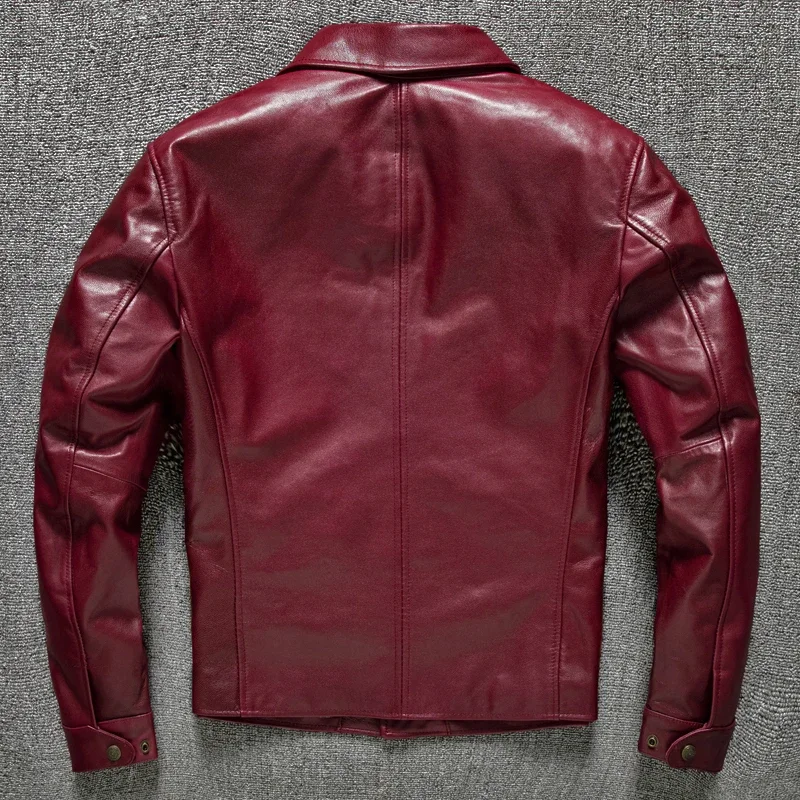
Warmth and Insulation Performance
When it comes to keeping you warm, both materials excel, but they do so in slightly different ways. The insulation capability of both shearling and sheepskin stems from the natural structure of wool fibers, which trap air and create thermal barriers against cold.
Shearling typically offers:
* Exceptional warmth-to-weight ratio
* More consistent insulation due to uniform wool density
* Better performance in dry, cold conditions
* Natural temperature regulation that prevents overheating
Sheepskin generally provides:
* Greater overall thickness for extreme cold protection
* Varied insulation based on wool length and processing
* Sometimes better wind resistance due to denser wool varieties
* Excellent insulation even when compressed
The wool density plays a crucial role in heat retention. Shearling’s finer, denser wool creates more air pockets per square inch, often resulting in better insulation efficiency. However, some varieties of thick sheepskin can provide superior protection in the most extreme cold due to sheer volume.
Both materials maintain most of their insulating properties even when damp, though they perform best when dry. In temperatures ranging from 15°F to 30°F (-9°C to -1°C), both materials provide excellent protection, with performance differences becoming more noticeable in extreme conditions below 0°F (-18°C).
For detailed comparisons of insulation performance, our article on winter warmth differences between shearling and sheepskin provides temperature-specific insights. Additionally, understanding winter jacket temperature ratings can help you match material performance to your local climate conditions.
Durability and Lifespan Analysis
Investing in premium winter outerwear means considering how long the material will last under regular use. Both shearling and sheepskin are known for their durability, but they age differently depending on care and usage patterns.
Factors affecting durability include:
- Quality of the initial tanning process
- Thickness of the hide portion
- Regular maintenance and cleaning
- Storage conditions during off-seasons
- Exposure to moisture and sunlight
- Frequency of wear
Sheepskin from mature animals often features a thicker hide that can withstand more abrasion, potentially making it more resistant to wear in high-friction areas like cuffs and collars. However, quality shearling’s finer leather can be more resistant to cracking if properly maintained.
With proper care, premium leather and shearling coats typically last 10-20 years, with some becoming family heirlooms that improve with age. The leather develops a rich patina over time, while the wool may compact slightly but maintains its insulating properties.
Signs of quality craftsmanship that indicate better durability include tight, even stitching, reinforced stress points, proper pattern matching, and clean seam finishing. These construction details often matter more than the specific material choice in determining longevity.
Comfort and Wearability Factors
The day-to-day experience of wearing shearling versus sheepskin reveals significant differences in comfort and wearability. These factors can greatly impact satisfaction with your investment.
Shearling typically offers:
* Lighter weight for easier all-day wear
* Greater flexibility and movement
* A shorter break-in period
* Exceptional softness against the skin
* Natural conformity to body contours over time
Sheepskin generally provides:
* More substantial feel and drape
* Greater wind-blocking capability due to thickness
* Varied texture experiences based on processing
* Sometimes more initial stiffness requiring break-in
The weight difference between these materials can be substantial. A full-length shearling coat might weigh 20-30% less than a comparable sheepskin coat, reducing fatigue during extended wear. This makes shearling often preferred for active lifestyles or daily commuting.
Both materials excel at creating a microclimate around the body that feels remarkably comfortable even in fluctuating temperatures. The wool fibers naturally wick moisture away from the body while allowing air circulation, preventing the clammy feeling often associated with synthetic materials.

Weather Resistance Properties
While both materials provide excellent cold weather protection, their performance in different winter conditions varies significantly.
Natural weather resistance properties include:
Water Resistance: Both materials contain natural lanolin, a waxy substance that provides some water repellency. Shearling typically has higher lanolin content, making it naturally more water-resistant initially. However, this advantage diminishes over time as lanolin depletes with cleaning and wear.
Wind Protection: Sheepskin often provides superior wind protection due to its greater thickness and sometimes longer wool fibers that create more substantial barriers against gusting winds.
Snow vs. Rain Performance: Both materials perform better in snow than rain. Snow tends to sit on the surface and can be brushed off, while sustained rain can eventually saturate the materials, though sheepskin typically takes longer to become fully saturated.
Recovery After Wetting: Shearling generally dries faster and recovers its shape better after exposure to moisture, while some sheepskin varieties may become temporarily stiffer until fully dried and brushed.
For enhanced weather protection, both materials can be treated with specialized protectants that increase water resistance without compromising breathability. These treatments are especially recommended for garments like our men’s shearling coats that might face varied winter conditions.
It’s worth noting that neither material is completely waterproof without additional treatment, and extreme or prolonged exposure to wet conditions should generally be avoided for maximum longevity.
Maintenance and Care Requirements
Proper care significantly extends the life of both shearling and sheepskin garments. Understanding the maintenance requirements helps you protect your investment.
Regular maintenance procedures for shearling:
* Gentle brushing of wool fibers with a soft-bristled brush
* Airing out after wear before storing
* Spot cleaning with specialized shearling cleaner
* Professional cleaning recommended for significant soiling
* Storage on wide, padded hangers away from direct light
Regular maintenance procedures for sheepskin:
* More vigorous brushing to maintain wool loft
* Periodic application of lanolin conditioner for the leather side
* Greater care needed to prevent moisture damage
* Professional cleaning typically required for full cleaning
* Storage in breathable garment bags during off-seasons
For both materials, avoid:
* Direct heat when drying (never use radiators or hair dryers)
* Regular dry cleaning with standard chemicals
* Prolonged direct sunlight exposure
* Storage in plastic bags that trap moisture
* Over-brushing that might loosen wool fibers
When spot treating stains, use products specifically designed for these materials, as general leather or fabric cleaners may damage the unique properties of men’s sheepskin coats. Always test cleaning products on an inconspicuous area first.
Cost Analysis and Value Proposition
The investment in either material represents a significant purchasing decision that should be evaluated based on long-term value rather than initial cost alone.
General price ranges:
* Quality shearling jackets: $800-$3,000+
* Premium sheepskin coats: $600-$2,500+
Several factors influence these price points:
* Material origin and quality
* Complexity of the garment construction
* Brand reputation and craftsmanship
* Finishing details and hardware quality
* Exclusive design elements
From a value perspective, both materials offer exceptional longevity compared to synthetic alternatives. A well-made shearling or sheepskin coat often lasts 10-20 years or more with proper care, bringing the cost-per-wear down significantly over time.
Shearling typically commands higher prices due to the specific requirements of using younger animals and the more specialized tanning process. However, its lighter weight and often more refined appearance may justify the premium for many buyers.
When selecting from our men’s winter coats collection, consider not just the initial purchase price but the years of service the garment will provide in harsh winter conditions.
Mens Heavy Winter Coat, Mens Insulated Coat, Mens Parka Coat
Price range: $175.52 through $237.36 Select options This product has multiple variants. The options may be chosen on the product pageMens Big and Tall Winter Coats, Mens Down Coat, Mens Hooded Winter Coat, Mens Puffer Coat
Price range: $126.44 through $217.01 Select options This product has multiple variants. The options may be chosen on the product pageMens Big and Tall Winter Coats, Mens Hooded Winter Coat
Price range: $80.32 through $106.68 Select options This product has multiple variants. The options may be chosen on the product pageMens Cashmere Overcoat, Mens Hooded Winter Coat, Mens Wool Blend Coat
Price range: $128.72 through $139.68 Select options This product has multiple variants. The options may be chosen on the product pageMens Hooded Winter Coat, Mens Insulated Coat, Mens Puffer Coat, Mens Quilted Coat
Price range: $139.88 through $177.72 Select options This product has multiple variants. The options may be chosen on the product pageMens Double Breasted Pea Coat, Mens Hooded Winter Coat, Mens Quilted Coat
Price range: $81.00 through $108.48 Select options This product has multiple variants. The options may be chosen on the product page
Best Applications for Shearling
Shearling excels in specific applications where its unique properties provide particular advantages:
Luxury Urban Outerwear: The refined appearance and lighter weight make shearling ideal for city environments where style matters as much as function.
Aviation and Motorcycle Jackets: The classic aviator and bomber jacket styles benefit from shearling’s warmth-to-weight ratio and freedom of movement.
Jacket Linings and Collars: The soft texture makes shearling perfect for areas that contact skin directly, such as collars, cuffs, and linings.
Moderate to Cold Winter Climates: Shearling performs exceptionally well in temperatures from 15°F to 40°F (-9°C to 4°C).
Travel and Commuting: The lighter weight and packability make shearling more practical for travelers and daily commuters.
Iconic shearling garments like the B-3 bomber jacket and modern interpretations of aviator styles showcase why this material has remained popular for decades. The distinctive look of shearling creates instantly recognizable silhouettes that have transcended trends to become timeless shearling coat classics.
Best Applications for Sheepskin
Sheepskin’s specific characteristics make it the superior choice in certain scenarios:
Extreme Cold Weather Protection: The greater thickness and often longer wool fibers provide maximum insulation in the harshest conditions.
Rugged Outdoor Activities: The typically more durable hide portion stands up better to rough use and abrasion.
Full-Length Winter Coats: The substantial drape and weight create impressive full-length coats with dramatic presence.
Footwear and Accessories: Sheepskin’s versatility makes it ideal for boots, gloves, and hats where durability matters.
Dry, Cold Climates: In areas with very low temperatures but minimal precipitation, sheepskin’s thickness provides unmatched warmth.
Traditional ranch coats and full-length dusters made from sheepskin exemplify the material’s rugged elegance and protective qualities. These garments often become signature pieces in a winter wardrobe, offering both unmistakable style and serious cold-weather performance.
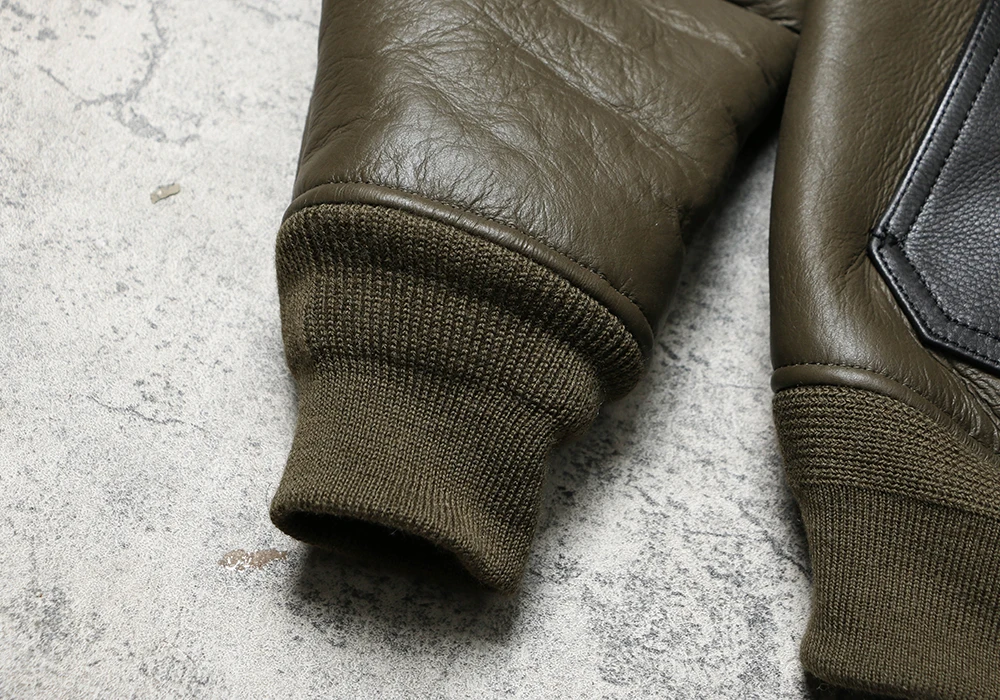
How to Identify Quality in Both Materials
Knowing how to assess quality ensures you’re making a worthwhile investment regardless of which material you choose:
Visual quality indicators:
* Even coloration throughout (unless intentionally varied)
* Uniform wool density without thin patches
* Clean, precise stitching with no loose threads
* Supple leather without cracks or stiffness
* Neat, flat seams with proper alignment
Touch-based assessment:
* Wool should feel soft and resilient, springing back when compressed
* Leather should feel pliable and smooth, not cardboard-like
* Edges should be cleanly finished without roughness
* Minimal shedding when wool is gently tugged
* Overall weight should feel substantial but not excessive
Red flags that may indicate inferior quality include:
* Excessive initial shedding of wool fibers
* Stiff, papery feel to the leather portion
* Uneven wool length or density
* Chemical smell rather than natural leather aroma
* Rough or unfinished edges inside the garment
When shopping, always examine the lining construction and internal seams, as these often reveal the overall quality of construction. For assistance in determining authentic materials, our guide on how to tell if a jacket is genuine shearling or sheepskin provides detailed verification tips.
Making Your Decision: Key Factors to Consider
To determine which material best suits your needs, consider these key decision factors:
Personal usage priorities:
* Primary need for warmth vs. weight vs. style
* Frequency of wear and expected longevity
* Comfort preferences and sensitivity
* Care and maintenance commitment level
Climate considerations:
* Typical winter temperature range in your region
* Precipitation type and frequency (snow vs. rain)
* Wind conditions and exposure level
* Indoor-outdoor transition frequency
Activity and lifestyle factors:
* Daily commuting vs. occasional special use
* Active movement requirements vs. stationary wear
* Urban vs. rural environment
* Storage and care facilities available
For those prioritizing luxurious appearance and lighter weight, shearling typically offers advantages, as detailed in our comparison of luxury outerwear options. For those facing extreme cold conditions, our cold weather performance guide may help you determine which material will better serve your needs.
The ideal choice balances your personal preferences with the practical demands of your environment and lifestyle. Both materials represent premium options that, with proper care, will provide exceptional warmth and style for many winters to come.
Frequently Asked Questions About Shearling and Sheepskin
Is shearling real sheepskin?
Yes, shearling is a specific type of sheepskin that comes from lambs and is processed with the wool still attached to the hide. All shearling is sheepskin, but not all sheepskin is classified as shearling.
How long do these materials typically last?
With proper care, quality shearling and sheepskin garments can last 10-20 years or more. The leather typically develops a desirable patina over time while maintaining its structural integrity.
Can these materials get wet?
Both materials have some natural water resistance due to lanolin content but are not waterproof. Light snow or brief exposure to moisture is generally fine, but prolonged exposure to heavy rain should be avoided. Shearling typically dries more quickly than thicker sheepskin.
Are these materials sustainable choices?
Both shearling and sheepskin are natural, biodegradable materials that, when sourced responsibly, represent more sustainable choices than petroleum-based synthetic alternatives. They typically last many times longer than synthetic options, reducing replacement frequency.
What’s the difference between lambskin and sheepskin?
Lambskin comes specifically from young sheep (under 1 year), resulting in a finer, more supple leather with softer wool. Sheepskin is the broader category that includes hides from sheep of any age.
Which is warmer for extreme cold?
Generally, thicker sheepskin provides better protection in extreme cold conditions below 0°F (-18°C) due to its greater overall mass and insulation. However, the difference may be negligible in moderate winter conditions, where shearling’s lighter weight might be preferable.
How do you clean these materials at home?
Light cleaning can be done at home using specialized sheepskin/shearling cleaners, a soft brush for the wool, and proper air drying away from direct heat. However, significant soiling usually requires professional cleaning by specialists experienced with these materials.

